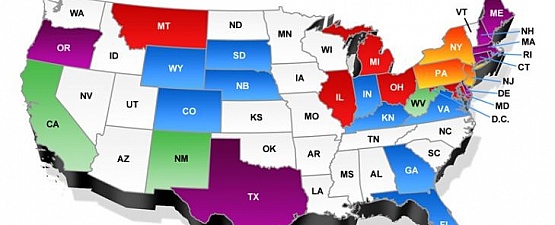What Is Energy Deregulation?
The easiest example of deregulation and regulation is on your actual power bill.
Take a look at the following two items:
-
The delivery charge and
-
The supply charge.
Below is an example of your monthly bill, and on it you can see both the Delivery Charge and the Supply Charge. Every bill in a deregulated state resembles this layout.
An Example of Your Monthly Electric Bill
| Electric Energy Delivery Charges | |||
|---|---|---|---|
| Customer Charge | $20.20 | ||
| Meter Charge | $7.24 | ||
| Dist. Deliv. Chrg. Summer | 14,269.00 kWh | @ $0.38620 | $551.07 |
| Electric Environ. Adj. | 14,269.00 kWh | @ $0.00143 | $20.44 |
| Rider EDR Charge | 14,269.00 kWh | @ $0.00179 | $25.54 |
| Electric Energy Supply Charges | |||
|---|---|---|---|
| Purch Elec. Summer | 14,269.00 kWh | @ $0.07208 | $1,028.51 |
| Meter Charge | 14,269.00 kWh | @ $0.00079 | $11.27 |
| Dist. Deliv. Chrg. Summer | 14,269.00 kWh | @ $0.00416 | $59.36 |
Total Monthly Bill: $1,832.79
Understanding The Difference Bewtween Delivery and Electric Charges
When the states became involved with deregulation they were concerned - as were many consumers - that delivery of power had to come from the incumbent utility. They did not want consumers to worry about the cost of having to replace the actual infrastructure such as poles, lines, etc. The states also wanted the incumbent utility to fix problems that may arise. Therefore the states decided to regulate delivery.
But that is not the case with supply. Supply of the commodity can come from anyone registered in the state as a REP (Registered Electric Supplier). In other words, look at the supply portion of your bills - this is what is open for deregulation. The incumbent utility produces the power and places it on the power grid. Before deregulation, the incumbent utility was the only company allowed to remove power from the grid and deliver it to customers along its own power lines.
Breaking Down Deregulation: Using Another Energy Supply Company
Deregulation simply allows other suppliers registered with the state to pull off the exact same power at the exact same price as the incumbent utility. Now it becomes a question of overhead. Let's say the incumbent can pull the power off the grid for $1 more (total $2) to cover overhead (lines, poles, employees, debt services).
Now the alternative supplier takes it off the grid and adds 10 cents (total $1.10) because they have much less overhead. Then they deliver that power over the incumbent's lines, by law, to you. The customer saves 90 cents and receives the exact same power over the exact same lines. This, in a nutshell, is what deregulation is all about - giving the consumer a choice, and ultimately allowing them to save money on their power consumption.



